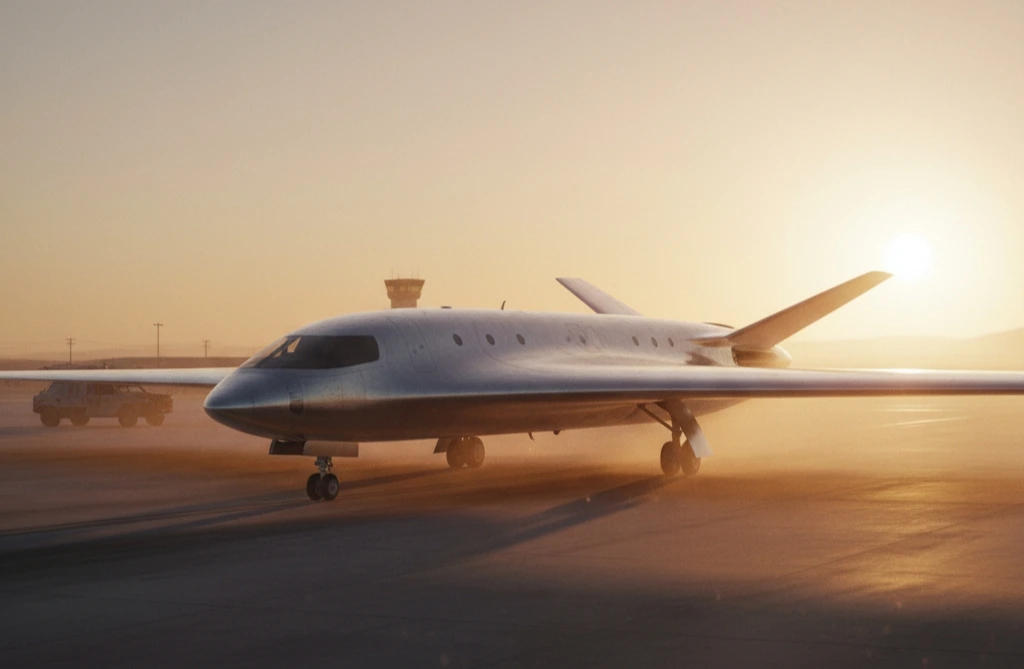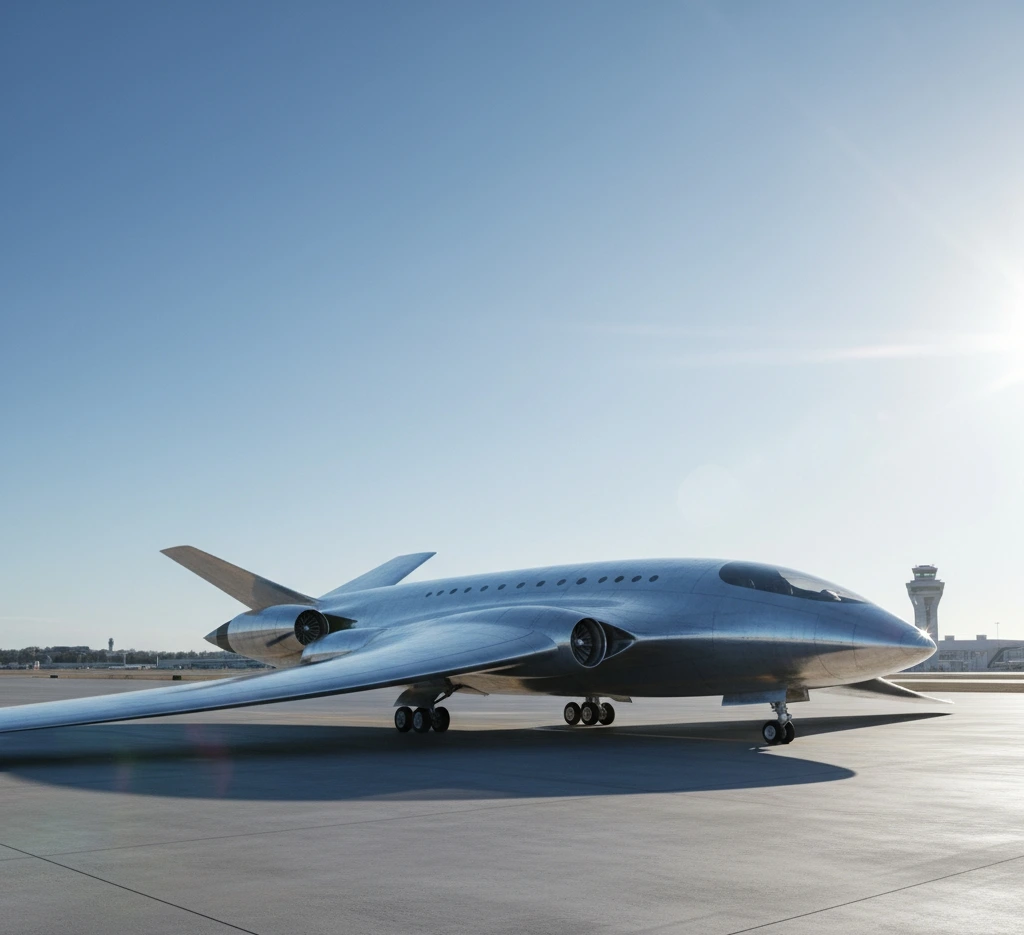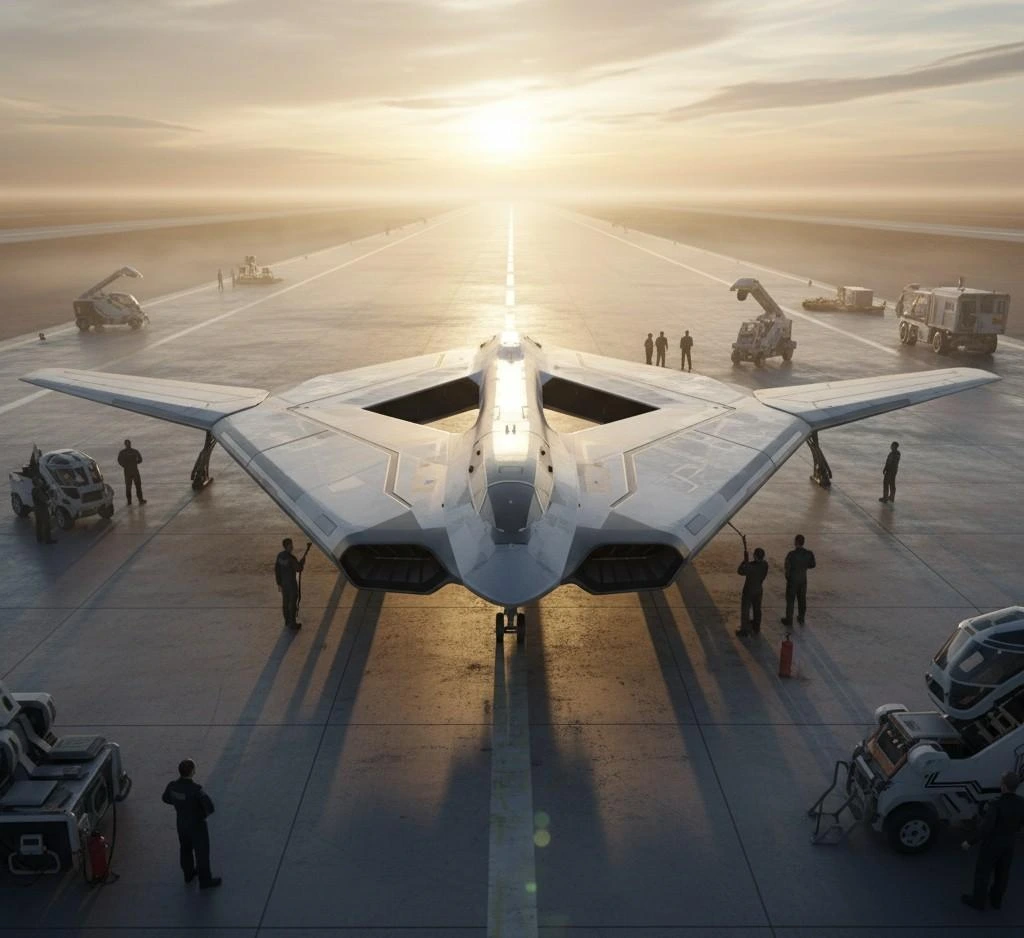A modern time in flying might be closer than many anticipate. The blended-wing aircraft — a plane where the body and wings frame one nonstop structure — has long been a concept saved for futuristic outlines or military aircraft. Presently, this radical thought is moving toward becoming a reasonable alternative for commercial carriers.
A Test Flight That Sparked Big Ambitions
In Walk 2025, a little V-shaped model named Steve took off from the Pendleton UAS Run in eastern Oregon. The remote-controlled craft, created by the Seattle-based startup Outbound Aviation, was airborne for a fair 16 seconds. However, that brief flight marked the start of what seems to be a major change in air travel.
Steve, officially known as the Scaled Test Vehicle, serves as a proof of concept for Outbound’s vision of creating a 200–250-seat blended-wing airliner by the 2030s. The future aircraft, already named Olympic, will feature a wingspan of around 171 feet (52 meters), roughly eight times larger than Steve.

Why Blended Wings Matter
The idea of merging an airplane’s fuselage and wings isn’t new. The first known attempt dates back to 1924, when the Westland Dreadnought — a pioneering but unstable aircraft — took flight and immediately crashed. Since then, only the military has continued developing such designs, mainly for bombers and stealth aircraft.
However, the global aviation industry’s push to cut emissions and improve fuel efficiency has revived interest in the concept. Research by NASA suggests that a well-designed blended-wing aircraft could reduce fuel burn and carbon emissions by up to 50%, while offering quieter performance and larger cabin space compared to conventional tube-and-wing designs.
Outbound Aerospace’s Bold Approach
Outbound Aerospace believes its approach to aircraft manufacturing can dramatically speed up development while cutting costs. According to co-founder and chief technology officer Jake Armenta, the company went “from a clean-sheet design to a flying demonstrator in just 12 months.” The prototype’s success proved that modern materials and 3D-printing techniques could shorten development cycles that traditionally take a decade or more.
Outbound’s next move is to convert Steve into a cargo drone, which already has interest from the U.S. Department of Defense and private customers seeking affordable, large-capacity transport drones.
Funding and Industry Competition
Outbound has raised almost $1 million in early-stage funding, sufficient to utilize a small group and start demonstrating the reasonability of its thoughts. The company’s executive of commerce improvement, Aaron Boysen, concedes that creating a new aircraft remains expensive but demands that creating income early is fundamental to survival.
The startup faces stiff competition. Other players, including JetZero and Nautilus, are racing to be first to market with full-scale blended-wing aircraft. Analyst Bill Sweetman calls this pursuit “the holy grail of aviation,” given its potential to redefine efficiency and comfort in air travel.
The Rise of JetZero
Among these challengers, JetZero has drawn the most attention. Based in Long Beach, California, it secured $235 million in funding from the U.S. Air Force, with additional backing from United Airlines and Alaska Airlines. United has even signaled potential interest in ordering up to 200 of JetZero’s Z4 aircraft if performance goals are met.
JetZero collaborates with major aerospace companies such as BAE Systems, Northrop Grumman, and Pratt & Whitney. The company’s small-scale Pathfinder I demonstrator has now completed its plan audits, and JetZero points to starting testing a full-sized adaptation as early as 2027.
A Showcase Prepared for Disruption
For decades, Airbus and Boeing have dominated commercial aircraft generation, leaving little room for modern participants. But developing natural weight and innovative propulsion has created an opportunity for new businesses like Outbound and JetZero to challenge the status quo.
Boysen believes this renewed attention benefits all innovators in the field:
“The more JetZero promotes blended-wing designs, the more awareness and interest we all gain from airlines and investors.”
The Technical Challenge
Despite the excitement, major technical hurdles remain. One of the biggest is how to create a pressurized passenger cabin within the nontraditional shape of a blended-wing design. Aircraft cabins typically have circular cross-sections to withstand internal pressure. Integrating that into a wide, flat structure adds significant engineering complexity.
Another challenge is public acceptance — convincing passengers to trust and embrace aircraft that look and feel dramatically different from the ones they know today.

A Century in the Making
The road to blended-wing flight is paved with decades of experimentation. In the late 1980s, NASA launched initiatives to explore revolutionary aircraft configurations. That effort produced the Boeing/NASA X-48, a small-scale prototype that flew more than 120 successful test missions between 2007 and 2013. The X-48 demonstrated strong aerodynamic efficiency and noise reduction potential, but it never advanced to full production due to cost and certification barriers.
Outbound’s Steve, by differentiation, was built to coordinate the X-48’s measurements but on a division of its budget and timeline. The group utilized carbon fiber development and 3D-printed tooling to cut costs and quicken testing — proof, they say, that smaller new businesses can improve quicker than legacy manufacturers.
A Vision for the 2030s and Beyond
Outbound Aerospace envisions a family of aircraft based on the blended-wing plan. After Steve, the company plans to release the Gateway cargo drone, followed by a long-range business jet, and finally, the Olympic passenger airliner. The ultimate goal is to expand the lineup with a larger model by the 2040s.
The company’s leaders see Seattle’s deep pool of aerospace talent as a strategic advantage. “There are so many experienced engineers here who are eager for something new,” says Boysen. “That’s what fuels our ambition.”
The Future of Blended-Wing Flight
Whereas skepticism remains, the force behind blended-wing innovation is developing. Made strides in materials, progressed computer modeling, and rising natural mindfulness have combined to make what once appeared like science fiction now feel feasible.
As Sweetman points out, airlines’ initial investments are modest compared to their overall budgets, but they serve an important purpose: signaling to the world that aviation innovation is back in motion.
For Outbound, JetZero, and others, the journey from small prototypes to commercial airliners will be long and complex — but each successful flight brings the blended-wing dream closer to reality.



